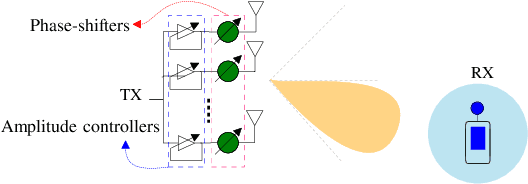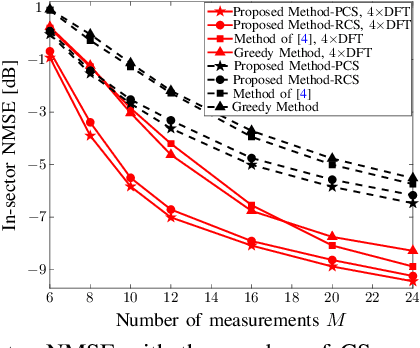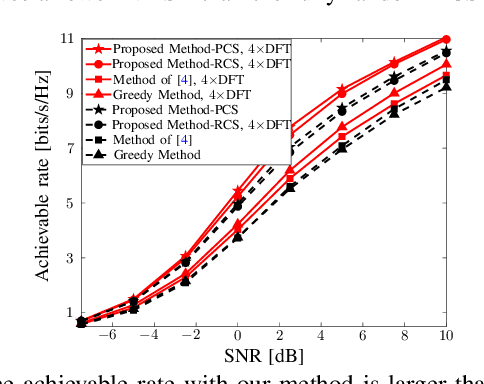Hamed Masoumi
In-sector Compressive Beam Alignment for MmWave and THz Radios
Aug 25, 2023



Abstract:Beam alignment is key in enabling millimeter wave and terahertz radios to achieve their capacity. Due to the use of large arrays in these systems, the common exhaustive beam scanning results in a substantial training overhead. Prior work has addressed this issue, by developing compressive sensing (CS)-based methods which exploit channel sparsity to achieve faster beam alignment. Unfortunately, standard CS techniques employ wide beams and suffer from a low signal-to-noise ratio (SNR) in the channel measurements. To solve this challenge, we develop an IEEE 802.11ad/ay compatible technique that takes an in-sector approach for CS. In our method, the angle domain channel is partitioned into several sectors, and the channel within the best sector is estimated for beam alignment. The essence of our framework lies in the construction of a low-resolution beam codebook to identify the best sector and in the design of the CS matrix for in-sector channel estimation. Our beam codebook illuminates distinct non-overlapping sectors and can be realized with low-resolution phased arrays. We show that the proposed codebook results in a higher received SNR than the state-of-the-art sector sweep codebooks. Furthermore, our optimized CS matrix achieves a better in-sector channel reconstruction than comparable benchmarks.
Analysis of Orthogonal Matching Pursuit for Compressed Sensing in Practical Settings
Mar 02, 2023Abstract:Orthogonal matching pursuit (OMP) is a widely used greedy algorithm for sparse signal recovery in compressed sensing (CS). Prior work on OMP, however, has only provided reconstruction guarantees under the assumption that the columns of the CS matrix have equal norms, which is unrealistic in many practical CS applications due to hardware constraints. In this paper, we derive sparse recovery guarantees with OMP, when the CS matrix has unequal column norms. Finally, we show that CS matrices whose column norms are comparable achieve tight guarantees for the successful recovery of the support of a sparse signal and a low mean squared error in the estimate.
Structured Sensing Matrix Design for In-sector Compressed mmWave Channel Estimation
May 23, 2022


Abstract:Fast millimeter wave (mmWave) channel estimation techniques based on compressed sensing (CS) suffer from low signal-to-noise ratio (SNR) in the channel measurements, due to the use of wide beams. To address this problem, we develop an in-sector CS-based mmWave channel estimation technique that focuses energy on a sector in the angle domain. Specifically, we construct a new class of structured CS matrices to estimate the channel within the sector of interest. To this end, we first determine an optimal sampling pattern when the number of measurements is equal to the sector dimension and then use its subsampled version in the sub-Nyquist regime. Our approach results in low aliasing artifacts in the sector of interest and better channel estimates than benchmark algorithms.
 Add to Chrome
Add to Chrome Add to Firefox
Add to Firefox Add to Edge
Add to Edge